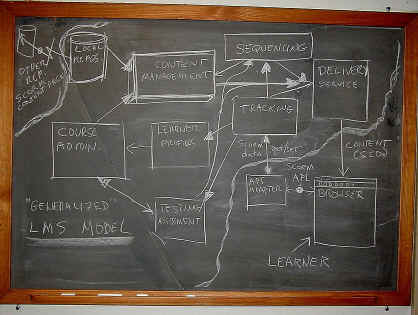Now that I have the basic SCORM RTE API (lots of acronyms!) and the “imaginary LMS” database table in place, I have to start looking at how to link them together.
The SCORM RTE API is implemented as a client-side application i.e. it uses JavaScript in the student’s browser. This is the cause of a host of problems which I won’t get into right now, and is one of the reasons why I designed the (server-side) LM-Light course/LMS interface standard a few years ago.
But, I’m trying to build a SCORM interface here, so I do have to deal with one problem right now, and that’s making JavaScript “talk” to the LMS server, and “listen” to the data coming back from that server. In other words, I have to make the student’s browser write data to the LMS server database, and read data from the same database. And this isn’t as simple as it seems.
Continue reading →



